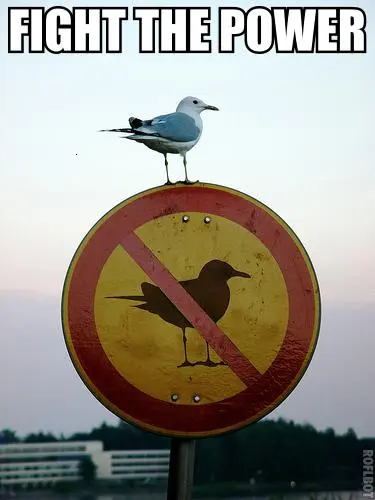So bad that bridge players see a perfect deal like once a decade. It often makes the news.
Tlaloc_Temporal
- 0 Posts
- 524 Comments
Ooo, a cladistic pun!

 11·5 days ago
11·5 days agoYet Another Better Barrel Attempt (YABBA)
Therapists as pentesters is an interesting concept. Maybe if we thought about it like that there would be more interdisciplinary methods.

 4·7 days ago
4·7 days agoIt’s the difference between a pyramid scheme and an MLM: one of them has a product in the mix.
Far better names than most others get. What the hell does a C. elegans elegans look like?
There are lots of reasons to have binocular frontal vision. Redundancy, differing info for optic flow, sensitivity, reducing the frontal blind spot, compensating for retinal blind spots, higher frontal resulution, seeing around things, depth perception…
Most of there are good for predators, but predation isn’t the only reason to have them.
Aye-Ayes and Tarsiers have very forward facing eyes, yet eat mostly gruvs in trees.

 2·29 days ago
2·29 days agoRandall does have a lot of geology humor specifically. I wouldn’t be surprised if he knows a few geologist.

 5·29 days ago
5·29 days agoI can see a little grain of truth in finding depressions and soft ground as the dowser shifts their body to stand level, which may indicate geological features associated with ground water.
Humans also have a really good sense of smell for petrichor, which might also be related to ground water, with dowsing just being useful to focus on suble things like smell.
Anyone who thinks dowsing can detect water directly is clueless or lying though, and dowsing has absolutely been used as a grift before.

 6·1 month ago
6·1 month agoThe low spec target seems pretty important.

 11·1 month ago
11·1 month agoGoblin sharks exist!
/j

 6·1 month ago
6·1 month agoThere’s a project that persists non-flatpack software, though it might screw up if it changes something that Valve updates: https://github.com/Chloe-ko/SteamDeckPersistentRootFs
A more reliable method would be installing them in distrobox. It’s kinda like a VM, but it uses the same kernel so it’s not much slower.

 11·1 month ago
11·1 month agoServer-side anti-cheat is the best solution, and doesn’t require any malware on the user’s machine. It’s harder though, and might need beefier servers, so…

 41·1 month ago
41·1 month agoSteam Deck is held back by the perception of mobile gaming. Many don’t know how powerful it is, so it competes with the Switch more than PS5.
When I first got into linux, I was having trouble with sound issues, and my track pad had pointer acceleration and was always the wrong speed.
Wayland apparently had a fix for the trackpad settings not taking, so I switched to logging in with Wayland before it was the distro default, and almost all of my problems disappeared instantly. The only real issue I had then was screen sharing, which is fixed now.
X11 has only given me problems. I’m sure it was great at one point, but it certainly did not back me up.
Does Vibrant Visuals not use Ray Tracing, or do you mean the RTX mode specifically? If you need specifically the windows 10 version, you could try WinApps or WinBoat, but I’d be surprised if you don’t take a significant performance hit. If graphics in a voxel game are what’s holding you back, I guess the meme is relevant.

 3·1 month ago
3·1 month agoI’ve had decent results running jetbrains IDEs from a Fedora Toolbx, probably doesn’t have to be fedora though. You just have to start them from a toolbox terminal.
You can play the android version in desktop mode with the Unofficial *nix Launcher.

The Sol-Jupiter system would have a bary center just 7% outside the surface of Sol. The effect of all the Gas Giants together can either center the syster in Sol’s core or move the barycenter 120% outside Sol.
The really weird thing is that the part of stars outside the core is more like an atmosphere. If the star gets hotter, the parts outside the core can expand. This is happening slowly as Sol’s core fills up with Helium and becomes denser, which fuses Hydrogen faster. So despite weighing less, the Sol-Jupiter barycenter will be engulfed within Sol’s envelope. Once Sol stops fusing Hydrogen in it’s core, the core will shrink and heat up, fusing Hydrogen in a shell around the core, which will cause the envelope to grow and engulf Venus and possibly Earth directly, and definitely contain the full system’s barycenter. After that it will release a bunch of mass in a planetary nebula, which will cause it to shrink a lot, and the remaining planets will probably orbit much farther out, which would throw the barycenter waaaayyyyyy outside of the white dwarf left over.